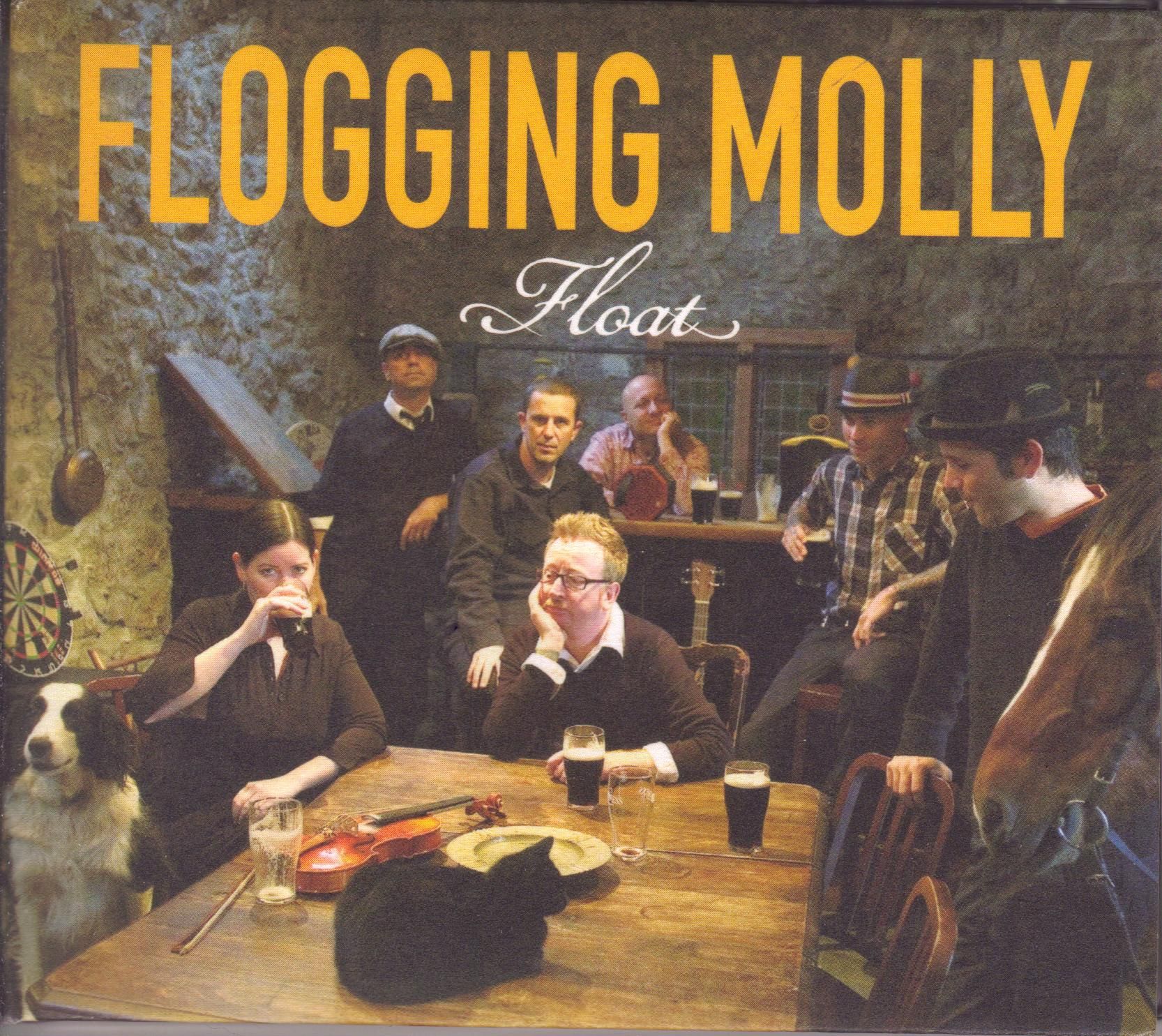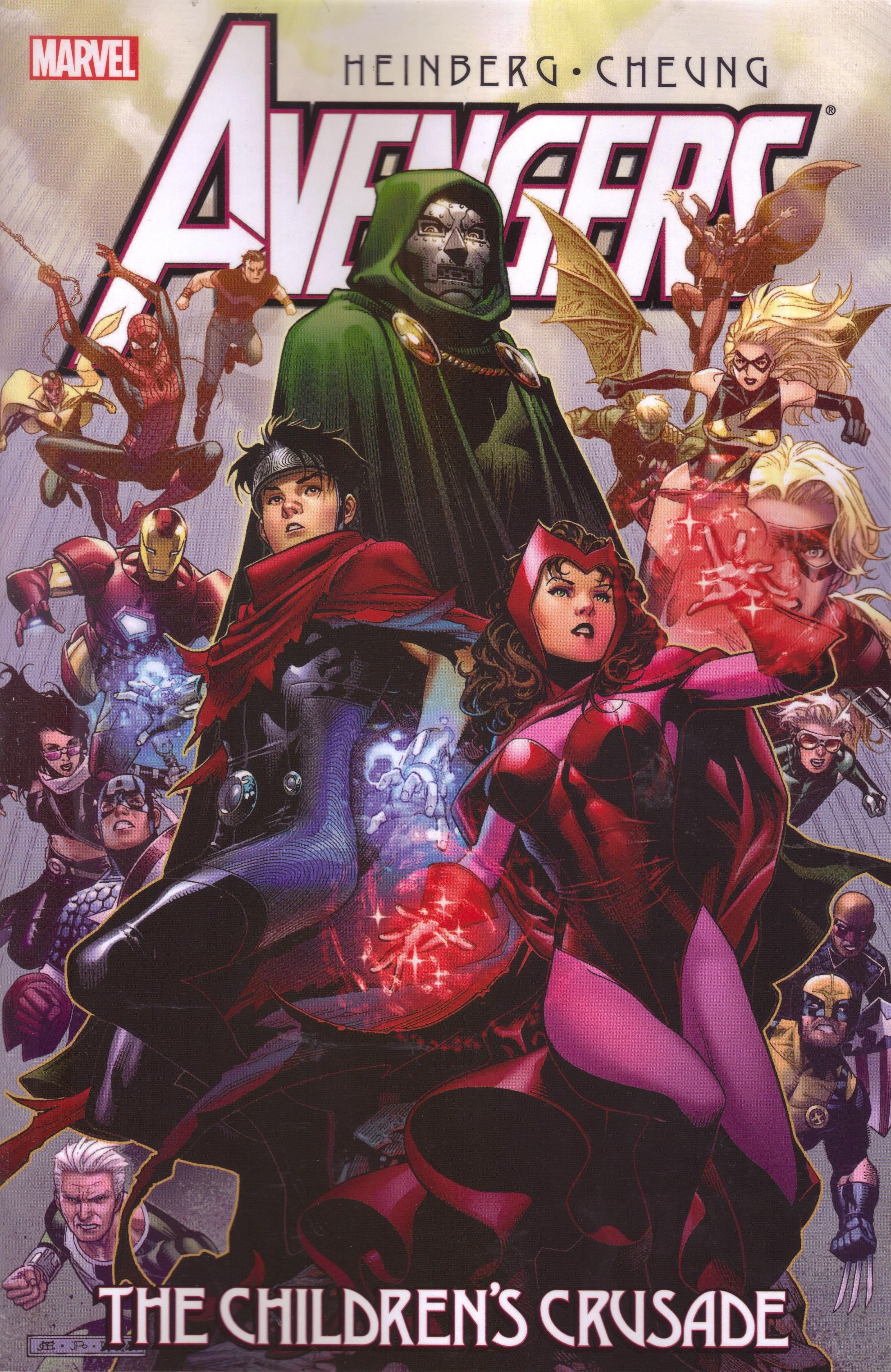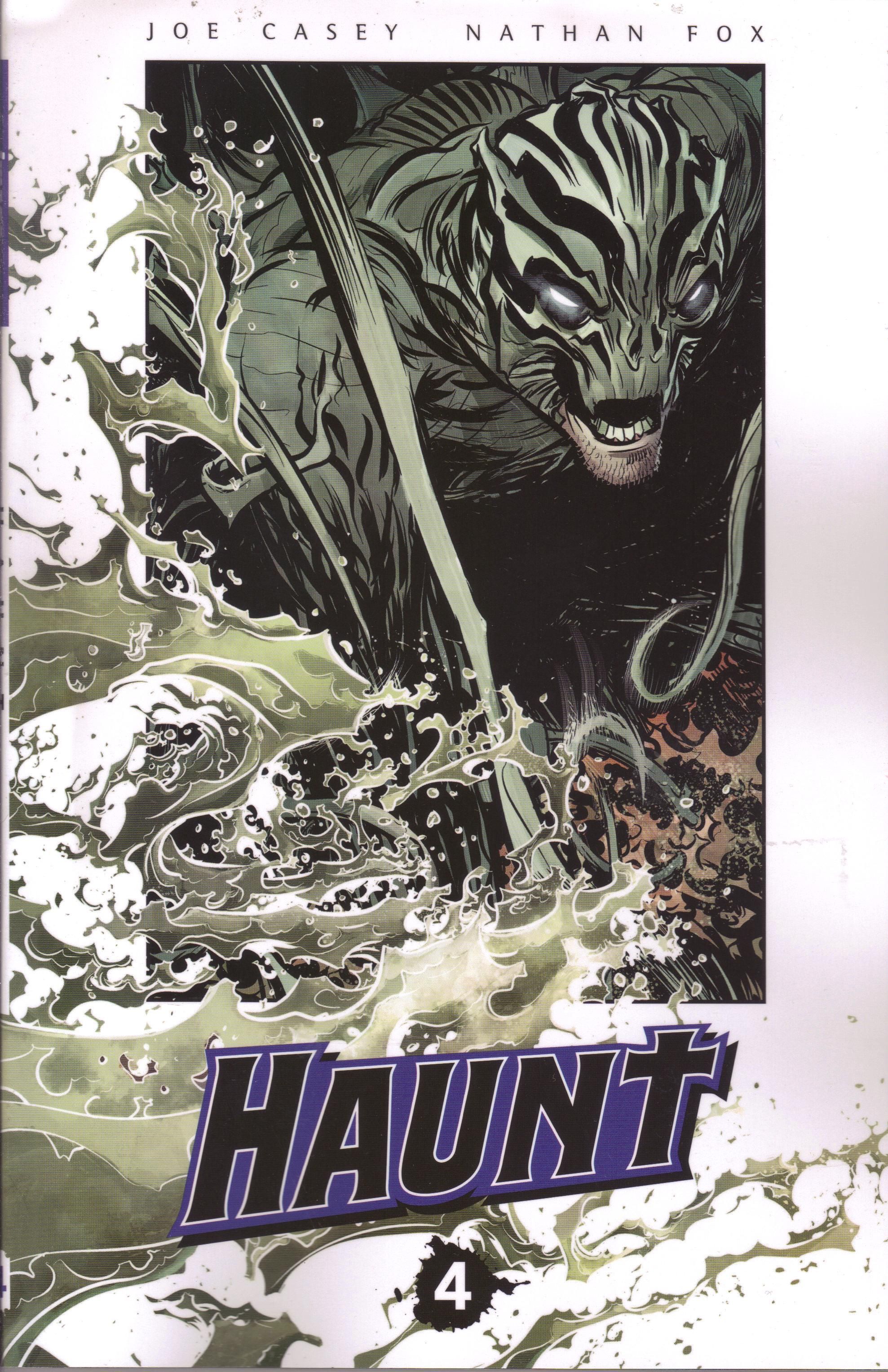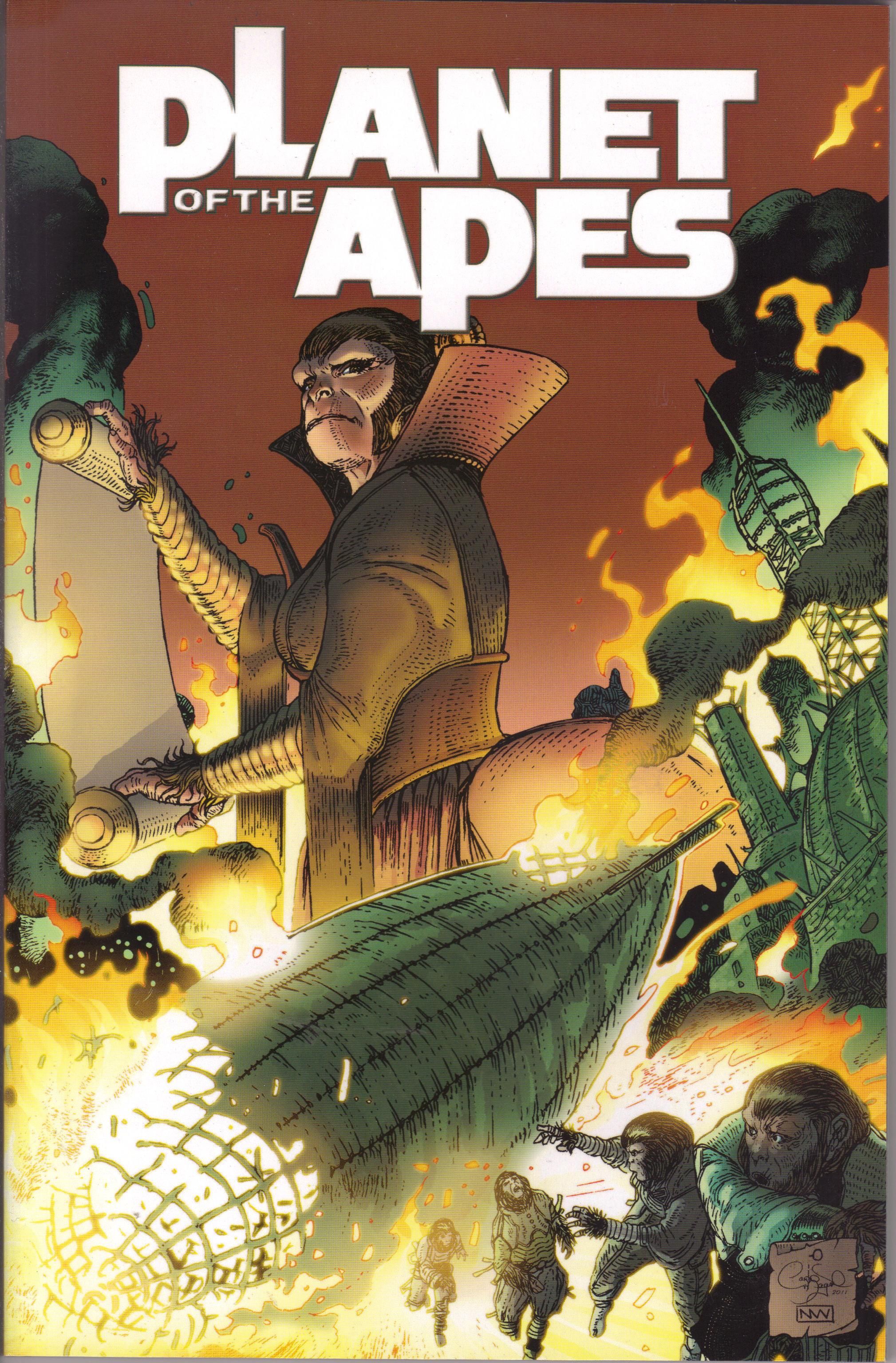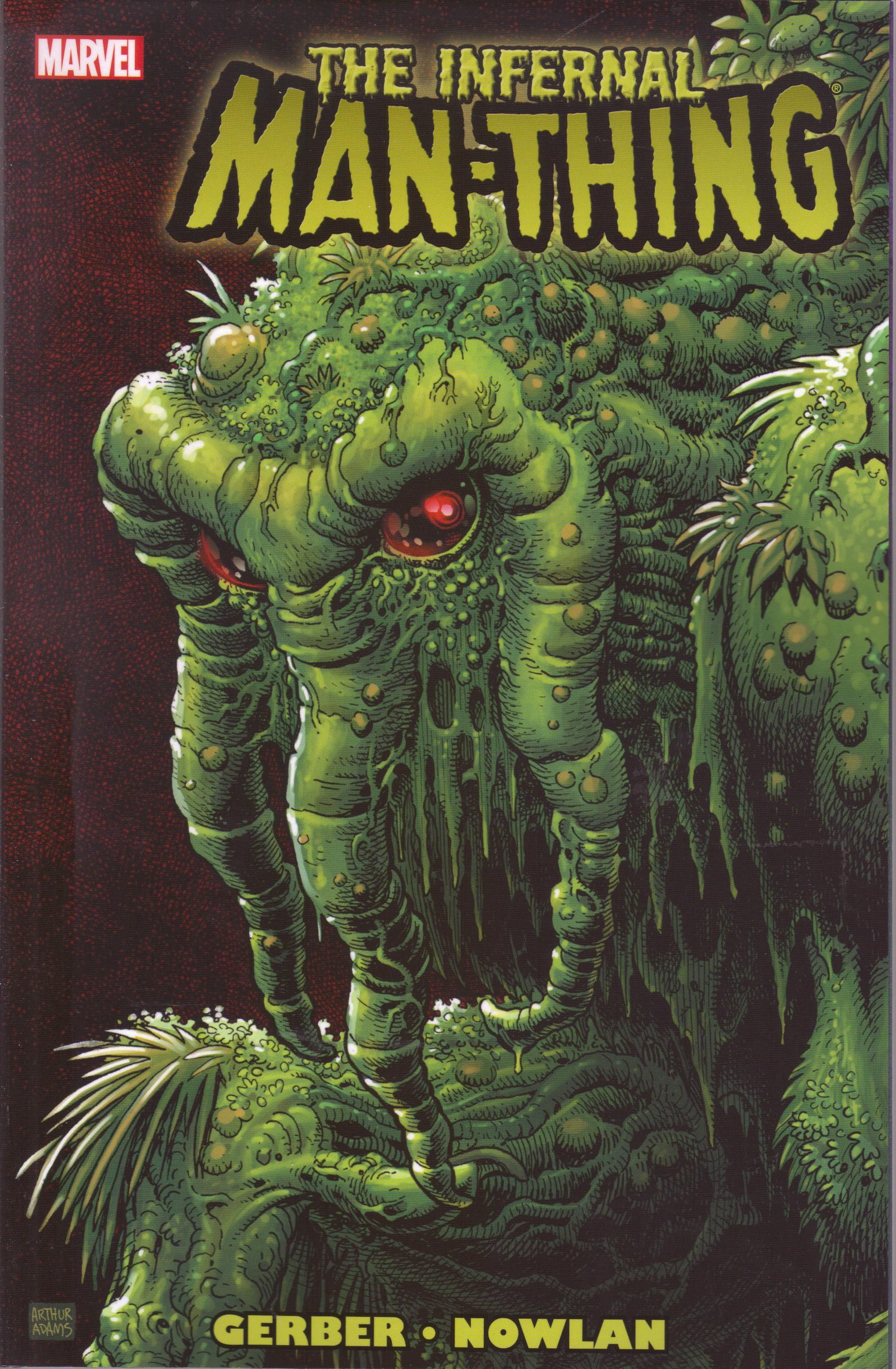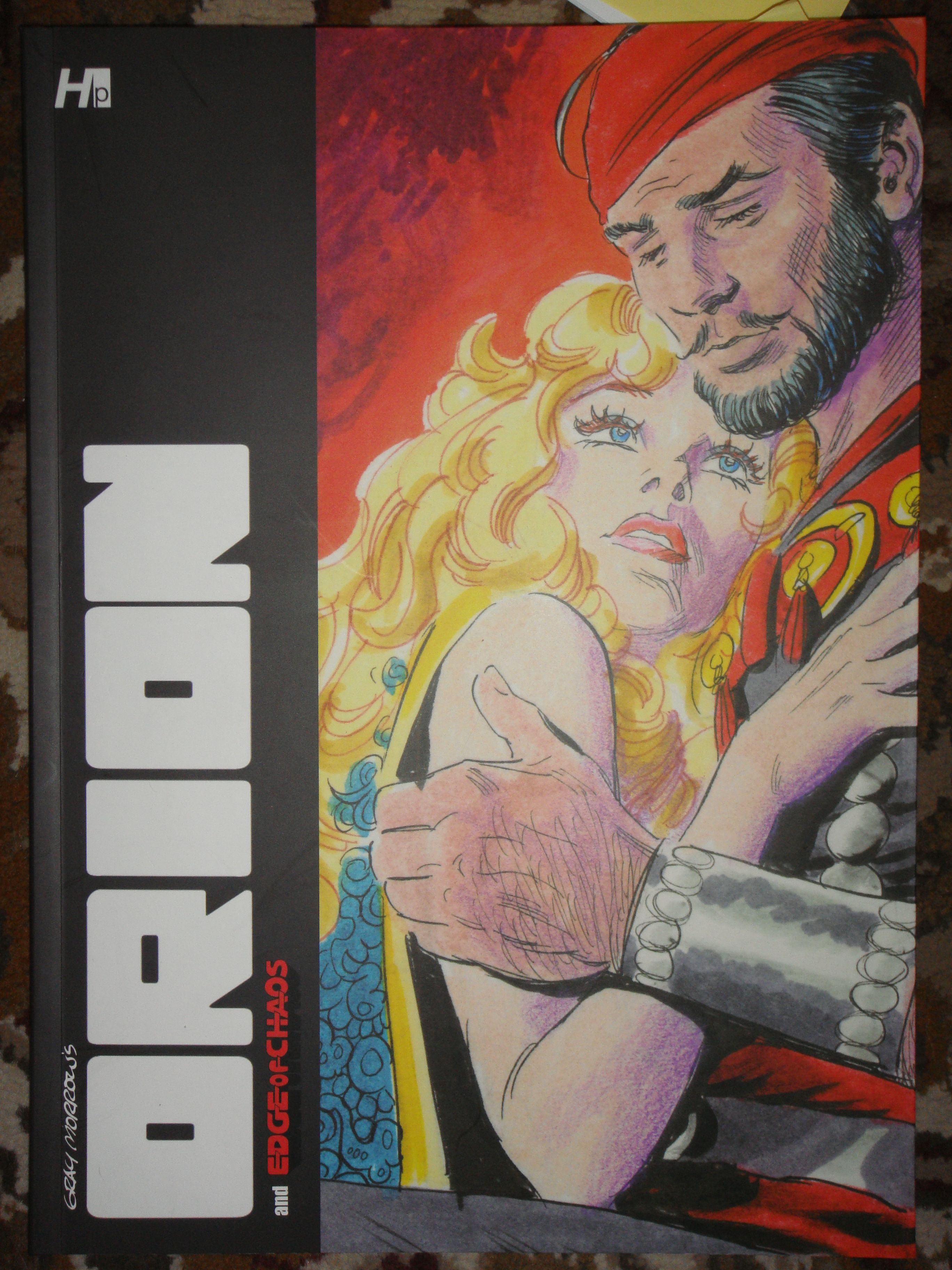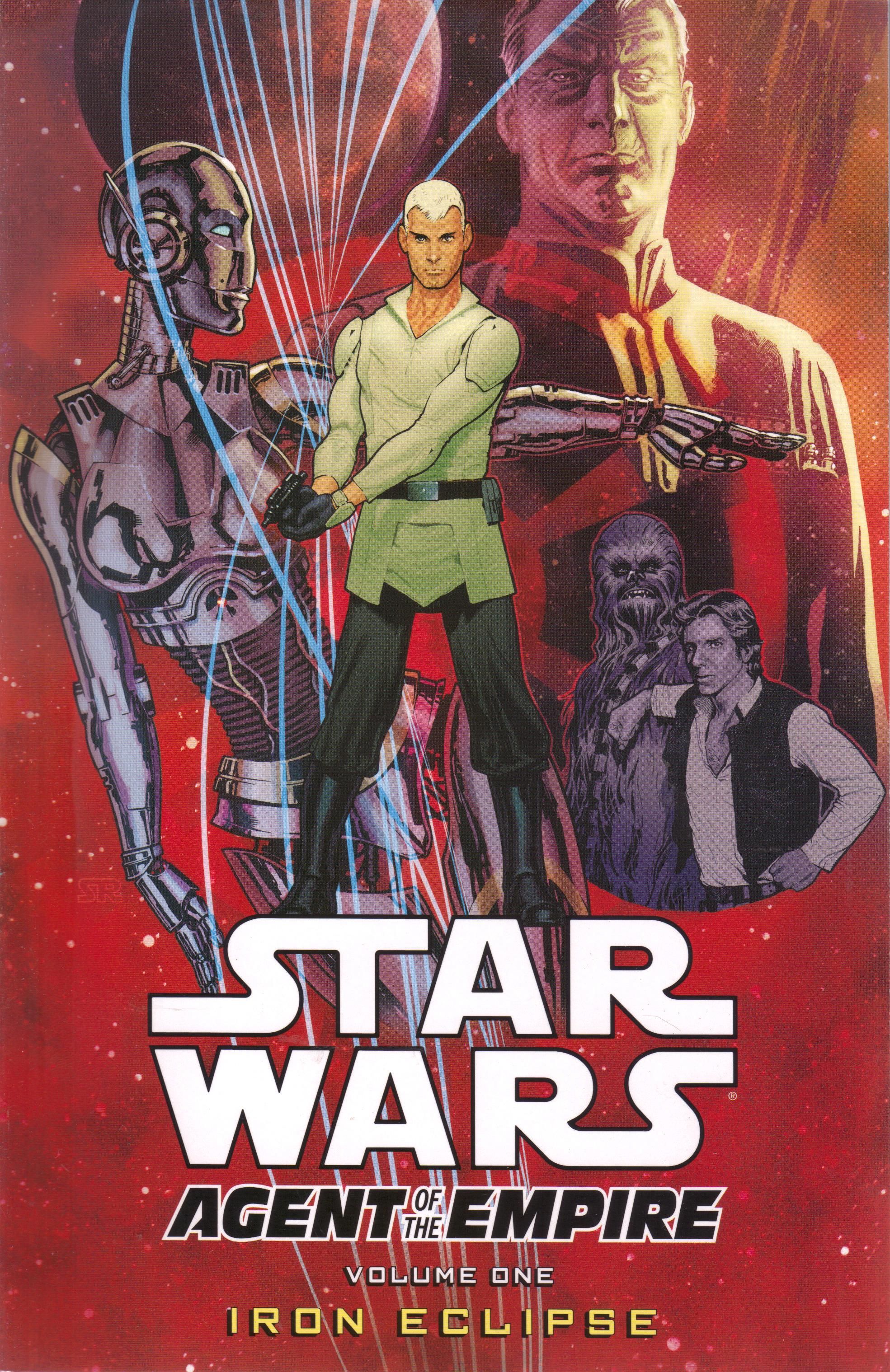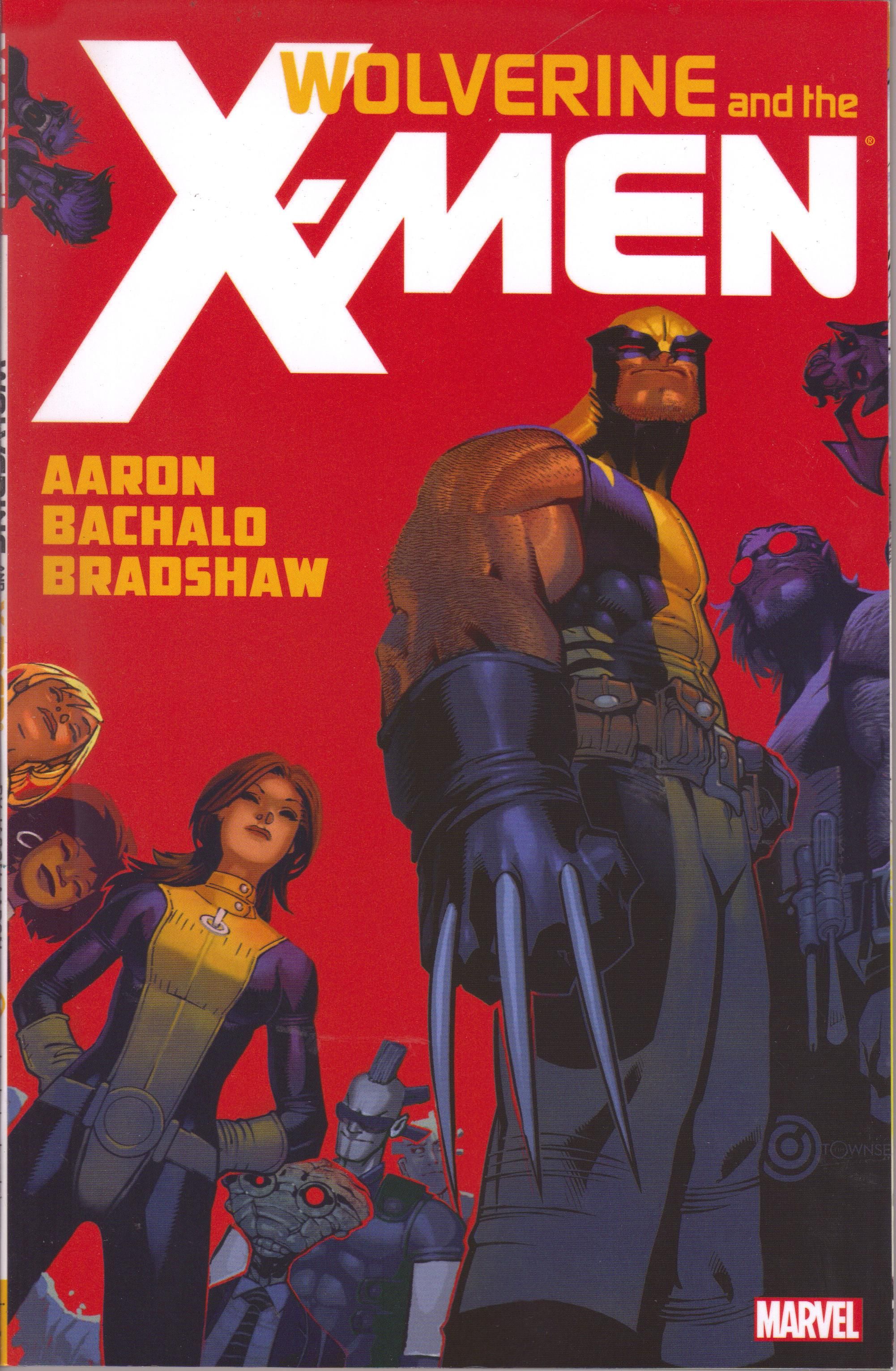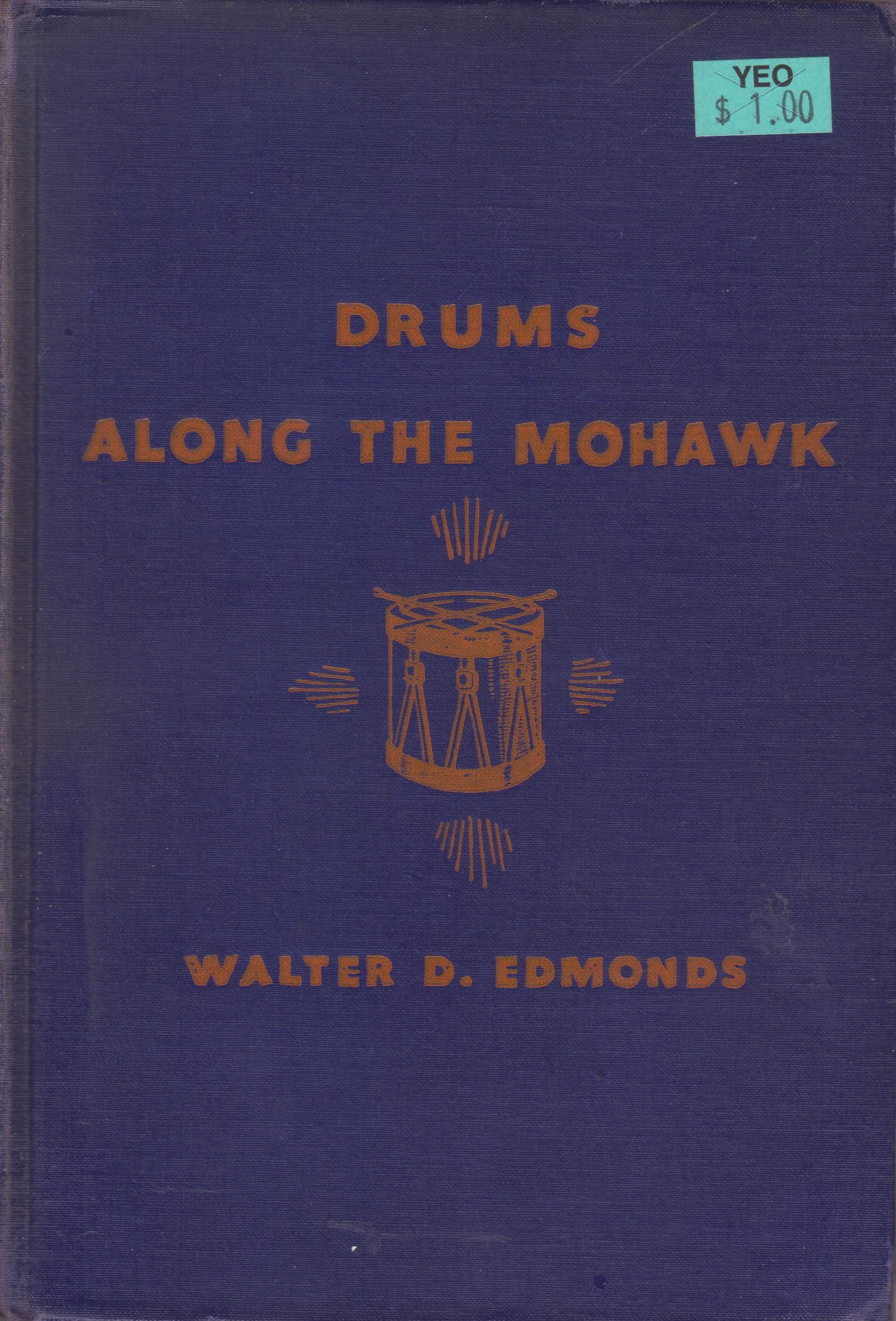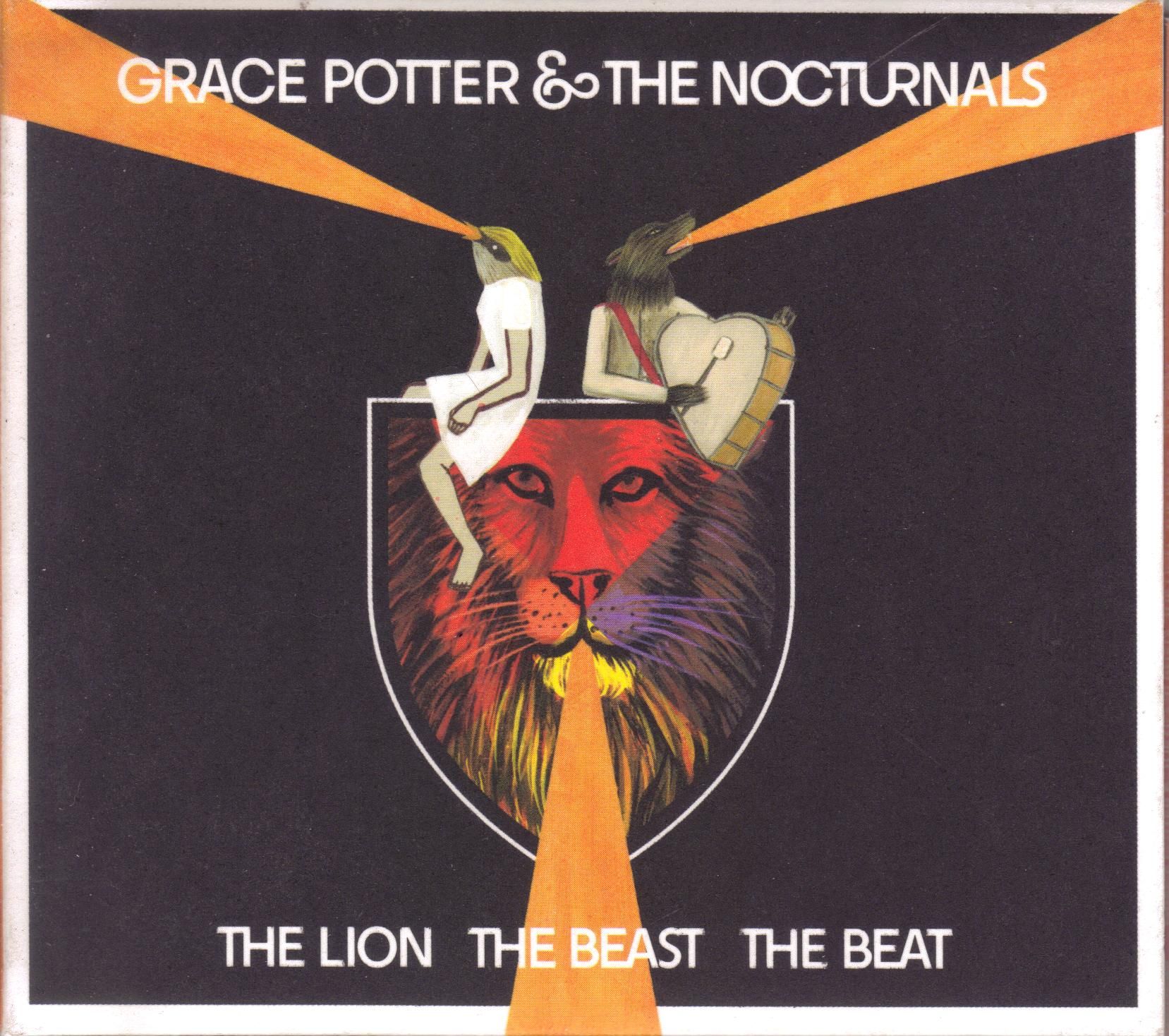These posts will only get longer, I fear!
Avengers: The Children's Crusade by Allan Heinberg (writer), Jim Cheung (penciler/occasional inker), Mark Morales (inker), John Livesay (inker), Dave Meikis (inker), Dexter Vines (inker), Justin Ponsor (colorist), Paul Mounts (colorist), Cory Petit (letterer), plus Olivier Coipel (penciler, "Rebuilding"), Joe Caramagna (letterer, "Rebuilding"), Alan Davis (penciler, "Avengers: The Children's Crusade - Young Avengers #1"), Mark Farmer (inker, "A: TCC - YA #1"), and Javier Rodriguez (colorist, "A: TCC - YA #1"). $29.99, 227 pgs, FC, Marvel.
Back when Marvel was still doing "Premiere" editions, I got the two trades of Young Avengers and enjoyed them. They weren't great, but they were pretty good. So I had to check out how Heinberg and Cheung "finished" the story, so to speak, even though this was published every other month, so it took forever to come out in "real time." That's cool, though - the good thing about waiting for the trade is that it doesn't matter how long it takes for something to come out in singles!
The Children's Crusade is, fascinatingly enough, pretty much everything that is wrong with superhero comics these days. It's a giant, sprawling, rather pretty mess. Cheung has his problems with some things - his faces all look alike, which makes the fact that people think Wiccan and Speed look alike hilarious - but he has a nice, detailed, slightly cartoony style that works well with big superhero spectacle, and he does frenetic action scenes quite well. And that's what Heinberg does - this is a big superhero spectacle that takes the slimmest of ideas - that Marvel made a big mistake in allowing Bendis, in a fit of pique that the Avengers still weren't as popular as the X-Men, to wipe out the mutants, and maybe they should rectify that - and turns it into a bloated 9-issue fight with ridiculous logic and really strained "emotional" moments. Billy - Wiccan - suddenly decides that he's going to find Wanda because he's convinced she's his mother (he's right, but in a convoluted way), and he almost destroys the world for his trouble. Because of course he does. People fight each other at the drop of a fucking hat, and Logan is even more psychopathic than usual - I'm a bit tired of Logan, true, but I've never disliked him as much as in this story. In fact, there are very few people in this comic who come off as admirable in any way - maybe Teddy, Kate, and Cassie, but that's about it. The Avengers are dicks, and then the X-Men come along and somehow are bigger dicks than the Avengers. I mean, as annoying as Logan is, Scott and Emma are total assholes, and it's nice that Billy calls out the fact that almost every X-Man (and a bunch of Avengers) has been a villain at some point (Scott has no excuse - he just has a stick up his ass). Meanwhile, Heinberg throws plot twists at us seemingly every other page, because there's nothing in the character interactions or even the grand plot to keep us interested, so he has to keep surprising us. When we finally get to Victor von Doom, hunky savior of the world, the book has become almost irredeemably bad. Really, Hunky Victor? At least he acknowledges that his scheme is completely not original, but that doesn't mean it's not stupid.
This is cynical sausage-making at its worst. "Hey, we need Wanda back!" "Hey, we need mutants back!" "Hey, we'd like Ant-Man back because that one Ant-Man fan - you know his Twitter handle, @ScottLang4EverMuthaPhookers - threatened to lead a boycott against our comics if we didn't!" So instead of an Ant-Man with a personality - Eric O'Grady might be a douchebag, but he's a fun douchebag - and a nice legacy hero - Cassie - we get a dead teenager (yeah, that's always fun) and boring old Scott Lang back. Instead of Marvel either putting their foot down to Bendis in 2005 and telling him he couldn't wipe out all the mutants or - shocking! - trying to figure out how to make the lack of mutants work in any meaningful way, we get more of Wanda's wishing powers - and Heinberg wasn't even allowed to do anything with them! Plus, there's time travel. Fucking hell, time travel.
I've been getting more and more tired of superhero comics for a number of reasons, mainly having to do with them eating their own tails. This is a superb example of an Ouroboros comic - it retcons a lot of things, it halts the career of legacy heroes who might have been able to take over from such tired icons as Steve Rogers and Tony Stark, and it's ultimately meaningless. It's nice-looking, it's exciting in the way two hours of things exploding with no other context might be exciting, and it features characters lots of people like. It's the perfect Big Two superhero comic for the 21st century! Too bad that means it's not very good in any meaningful way.
Rating: ★ ★ ★ ★ ☆ ☆ ☆ ☆ ☆ ☆
Haunt volume 4 by Joe Casey, Nathan Fox (artist), John Lucas (artist), Fco Plascencia (colorist), and Comicraft (letterer). $14.99, 122 pgs, FC, Image.
Joe Casey takes the idea of Haunt, which isn't bad - a priest and the ghost of his dead brother somehow meld together to form a ferocious monster - and teams with Fox to make the book a wacky, hallucinatory romp. It's certainly not Casey's best work - it's actually a lot like a less interesting Butcher Baker, and considering a lot of the interest of Butcher Baker comes from a level of depravity that isn't in this, you see where that could hurt it - but Casey still has a lot of fun with it. Daniel Kilgore, the priest (ex-priest, actually, as in the first issue he's banging a hot chick ... who dies quickly, unfortunately), and his brother, Kurt, who I guess was some kind of spy/soldier, don't much like each other, and when they form "Haunt," they bicker about who will be in charge. Daniel is nicer than Kurt, so he gets a bit upset that Kurt likes slaughtering bad guys, while Kurt, naturally, thinks Daniel is a bit of a wimp. Their main foes, the Second Church, are a bunch of weird dudes who have their own Bible (from which they liberally quote) and create things like fire golems. Because why wouldn't they? Along the way, they meet a dude named Still Harvey Tubman, who's a "conductor" - someone who helps ghosts reach Heaven (or something like it). We know he's probably going to try to hustle Kurt off the scene, but of course, the Kilgores don't.
This is, frankly, an insane comic book, which isn't surprising. Casey manages to shoehorn in some pretty decent character development, and his plotting, while not brilliant, is interesting. Fox is not to everyone's taste, I imagine, because his frenzied and detailed line work does make some of his drawings hard to figure out, but I love his work, and thought this was quite nice. Even some of the drawings that I had to stop and parse, like the giant horse bursting through Daniel's bedroom wall early on in the book, was fine, because it forced me to slow down and really look at each panel. Too often, artwork is easy to skim because it's so clear, and I don't mean to insult Fox by saying his art isn't clear, but it is a bit busy, and it makes the reader slow down. Once you do, you notice a lot of very cool details, and that's a good thing. Fox's art isn't messy to the point of incoherence, but he does force you to look at each panel very closely. Casey wisely writes a flashback issue for Lucas so that the flow of the narrative won't be interrupted too much by his more cartoony, less detailed style - it's perfectly fine artwork, but it's not on Fox's level. Plascencia is a fine colorist, and he does a really nice job with the bright reds and yellows of the book, making Fox's artwork leap off the page in places.
I imagine waiting for Haunt to come out (it's not too slow, but it's certainly not monthly) is kind of annoying, but as a whole, it's a nice little story. Casey is almost always interesting, at least, and he and Fox seem to be having fun with this book. It's not a great comic, but it's a better superhero book (yes, there's a lot of horror, but it's still a superhero book) than most of what's coming out from the Big Two these days. Scratch your superhero itch with this! You won't regret it!
Rating: ★ ★ ★ ★ ★ ★ ★ ☆ ☆ ☆
Planet of the Apes volume 3: Children of Fire by Daryl Gregory (writer), Carlos Magno (artist), Darrin Moore (colorist), and Travis Lanham (letterer). $14.99, 88 pgs, FC, Boom! Studios.
Planet of the Apes continues to be a strong, entertaining series, with a lot more on its mind than you might think. In this arc, Sully has her baby, but after that, things don't play out the way we expect. Meanwhile, the humans are fighting back, rather well, but they're still fighting a losing battle. Gregory flashes back to the incident at Red Creek, where apes and humans were living side by side in peace until some bad men came, and which drove a wedge in between Alaya and Sully, who had been childhood friends. Gregory pulls a nice trick at the end of the book, too - he had gone about as far as he could go with this situation, so he changes the situation rather drastically (I won't give anything away, but it's not like he kills everyone in the book and introduces new characters). What this will do is help him continue one of his themes, which is that Alaya is good-hearted but misguided, because she believes that the humans will be far happier living as slaves than struggling along as freemen. It's not the most subtle or original of themes, but it's not a bad one. One reason why it works is because Gregory has done a very good job creating these characters, so that there aren't really any villains. Alaya would seem to be the main one, but we know so much about what has happened to her and what she believes that it's hard to hate her too much. The humans, meanwhile, are fighting desperately for their freedom, which allows us to consider their heinous actions in a different light, as well. Sure, there are jerks on both sides, but Gregory has done a very nice jobs showing how two sides can reach a point of no return without really trying too hard to get there. Obviously, we know the apes are going to win in the end, as this takes place before the original movie, but Gregory is doing a very nice job showing how the apes - and humans - reached that point.
I don't have much to say about the art team, but Magno continues to do a fine job, while Moore does good work with the colors. The book is a bit dark occasionally, but not too often and not too badly, and the rest of it is really nice. In this arc, the book expands a bit outside of the city where Ayala lives, and Magno does a fine job with the wilderness in which the humans hide. Plus, he's good with action scenes, which is always a plus. I don't know how often this book comes out, but Magno does keep up, and it's nice to have a consistent look to the comic, especially with an artist who creates a nice, real-looking world.
There's not much else to say about the comic. It might not be near the top of your list of best comics in the world (2012 edition), but it's always entertaining and nice to look at, and Gregory is doing a good job showing the old idea of nobody winning in a war no matter which side triumphs. I'm curious to see where he goes with the book after the big shift at the end of this collection. I'm sure it will be good!
Rating: ★ ★ ★ ★ ★ ★ ★ ½ ☆ ☆
The Infernal Man-Thing by Steve Gerber (writer), Gerry Conway (writer), Roy Thomas (writer), John Buscema (layouter), Klaus Janson (finisher), Kevin Nowlan (artist/colorist), Gray Morrow (artist), Glynis Wein (colorist), John Costanza (letterer), and Todd Klein (letterer). $14.99, 91 pgs, FC, Marvel.
Steve Gerber has written some good stuff over the years, and I haven't read a ton of it, but I recognize that the dude has some interesting ideas and writing tics that make his comics, even the mainstream ones (especially the mainstream ones?) a bit off-kilter. That's part of his charm! One thing I haven't read by Gerber is his work on Man-Thing, one of his seminal comics. After reading this collection, I'm not sure I'm in any hurry to seek it out.
It's not that Infernal Man-Thing is bad. It's ... okay. We get a reprint of Man-Thing #12, which introduces the character of Brian Lazarus (the surname is not the most subtle in the world), who runs away to the swamp because his life as an advertisement writer isn't fulfilling. He ends up writing a manifesto that reads more like a teenager whining about how his parents won't let him stay out after 10 and isn't that unfair than something earth-shattering, but the mundane demons of his former life - bill collectors and such - won't leave him alone, as he sees them as weird apparitions (well delineated by Buscema and Janson). All of this activity attracts Man-Thing's attention, and horror ensues, naturally. Brian also strikes up a conversation with a dancer, Sybil, who helps him out. All ends well, of course, and Man-Thing shuffles back into the swamp. Ta-da!
It's a minor story with not a lot to recommend, even if you're keen on seeing Buscema and Janson work together. Gerber couldn't leave it alone, though, and some years later, he decided to write a sequel. The story of the sequel - how it took 20 years to publish and how Gerber couldn't even enjoy it because he's, you know, dead - isn't really the point, but this has been in the works for years. Marvel finally paid Kevin Nowlan to finish it, et voila! here we are.
The problem is that Brian Lazarus hasn't gotten any more interesting in the intervening years, and Gerber's writing of him didn't get any better. He still whines a lot, in other words. In the years since he was hanging out in the swamp, he moved to Hollywood and started writing animation. Then he got laid off and decided to write stuff on his own, but that didn't work out too well. So he abandoned his family (because they were too "normal," I guess) and went back to the swamp, where he happened to bump into Sybil again. He's still working on his great epic, "Mindy the Tree," and he's hallucinating a lot - not just Mindy, but other weird cartoon characters he worked on. And, of course, he's slowly going nuts again, so he attracts Man-Thing again. Oh dear.
It's a pretty banal story, as I guess we're supposed to think that Brian is standing up to the mundane society that commercializes everything, but that's such a dull theme that it's hard to get worked up about it. Brian's not an anti-establishment hero, he's a cowardly jerk who abandons his family. Sybil is a far more interesting character, mainly because she doesn't fall for any of his bullshit, but he's still the protagonist, and I suppose we're supposed to find his final confrontation (with whom, I won't say, because it gives too much away) as somehow noble, but he brought it on himself. I know characters railing against the confines of society are fun to write and maybe fun to read, but usually, they come off as whiners. Sorry, Brian - not interested.
Nowlan's oddball art, however, is lovely. He painted every page, and his beautiful and weird deep green Man-Thing is contrasted nicely with the bright colors of Brian's cartoon creations, which torment our poor mute creature. Nowlan also shifts easily from silly comedy - Brian imagines he's in some crazy situations - to horrific gore, and it makes the book feel weirder than it actually is. It's really a marvelous-looking comic, especially at the end, when the villain appears in full. We don't get to see enough Nowlan art these days, so it's nice that he was able to finish this. Plus, we get Man-Thing's origin, which is different enough from Swamp Thing's to be interesting, plus it's in gorgeous Gray Morrow black-and-white artwork.
Gerber seems to be best when the world he's working in is already a bit weird, like a mainstream superhero universe (although his work on Hard Time is phenomenal, too). That way he can contrast the true weirdness he's doing with the already slightly-skewed world of superheroes. Obviously, Man-Thing is a strange sight (and he exists within the Marvel Universe, of course), but his stories, from what I've read, are more horror featuring "regular" folk, and it just doesn't seem like Gerber's style fits that as well. I don't know - the Essential Man-Thing can probably give me a better feel for his work on this character. This book, however, is far more interesting for the artwork and as a historical curiosity. It's too bad!
Rating: ★ ★ ★ ★ ★ ½ ☆ ☆ ☆ ☆
Orion and Edge of Chaos by Gray Morrow (writer/artist). $39.99, 144 pgs, FC, Hermes Press.
I've been getting a lot of comics like this recently, because various publishers keep bringing them out - collections by great artists of the past who might not have worked on stuff for the Big Two and so lay fallow for decades. Gray Morrow is one such great artist, and while I've only recently discovered his work (I apologize!), I'm very glad that Hermes published this. It's a collection of a story he did in Heavy Metal in the 1970s (Morrow created Orion in 1967, but the story was reprinted and finished in 1978) and a three-issue series he created for Pacific Comics in 1983. It's certainly nice to have these stories in one place, in nice large artwork (the book doesn't fit on my scanner, hence the photograph of the cover).
The stories, however, are probably more interesting as historical artifacts than as good stories. Orion is certainly the better of the two, but it's clear that Morrow was much more an artist than writer, and both stories suffer from clichés, poor characterization, and mildly offensive stereotypes. Morrow, I think does enough with a character like Mamba in Orion so that the stereotypes associated with the character (who's black) are lessened, but they're still there. The plots are typical sword-and-sorcery fare: Orion is an adventurer with a magic sword who gets caught up in a battle between rival magicians, both of whom want to possess his blade, while Edge of Chaos tells of a man named Eric Cleese who is sucked back in time to fight a battle for the "Greek gods," who are really aliens (in the best Erich von Daniken tradition). Neither are superb, although because Orion doesn't feel as familiar, it reads a bit fresher - there's still plenty of predictability, but Morrow throws in a cat-woman, a sex toy, underground dwellers who look like rutabagas, and various other goofy stuff that tempers the serious goings-on a bit. Edge of Chaos has some of that, but it's still just the story of a mad sorcerer who wants to destroy the world because the woman he loved is dead. Pretty standard stuff, although Eric's modern lingo in an ancient setting is always fun to read.
You're probably going to read a Gray Morrow book for the artwork, and it doesn't disappoint. While I think his art works better in black and white, it's still glorious in color (except for a few places, which I'll get to) and gives the reader a thrilling experience. Morrow was wonderful at action sequences, and he draws each character with a lot of personality, so that we can read their faces for their emotions quite easily (and makes Morrow's somewhat ponderous prose unnecessary in such large quantities, but that's the way it was in the Seventies, man!). His imagination is boundless, as he creates two rich, beautiful worlds and populates it with dozens of interesting (at least visually) characters. In Orion, it appears he uses a thinner line and perhaps colors it with pencils, because it looks a bit more delicate than in Edge of Chaos. However, a note at the beginning of the book mentions something about the reproduction of the book. The first four chapters of Orion are reproduced from Heavy Metal and "digitally fixed" to more closely resemble the original production art. The remainder of the book was reproduced from Morrow's original artwork. You can tell the difference - the first part of Orion has a thicker line and deeper colors, although it still looks more delicate than the second story. Edge of Chaos, however, was shot directly from the published comics, and it's much less crisp and far murkier. You can still see the beautiful line work, but the inks are heavier and it's not quite as clear as Orion, and I don't know how much is from the source and how much is from the blow-up of the page size. Some of Edge of Chaos is quite sloppy, unfortunately, and I'm not sure why. Morrow suffered from Parkinson's later in life, but I have no idea if it had started to affect him at this early age (he wasn't yet 50 when he worked on Edge of Chaos). Maybe he was just rushed. I'll also point out that there is a lot of females with no shirts on in this book - in Orion, it's hard to find a woman whose breasts aren't bared. I imagine the fact that it was for Heavy Metal allowed Morrow some freedom in that regard, but what's interesting about Orion, especially, is that most of the men wear little clothing as well - the book is set in a semi-desert landscape, after all. The nudity is very rarely titillating, as well - there's some sex in the books (rather demurely shown), but generally, the fact that the women are showing their breasts is matter-of-fact. If you're just looking for a comic with a lot of breasts ... well, you can't go wrong with this one!
I don't love this comic from a purely "good comic" standpoint - there's too much wrong with the writing and even the artwork in Edge of Chaos. I'm glad I own it, though, because I'm so woefully bad at comics history from before, say, 1980, and even since then I have large holes in my knowledge. Gray Morrow is a tremendous artist who deserves a wider audience even a decade after his death, and if you're interested in a nice piece of comic book history, this is a fun comic to check out.
Rating: ★ ★ ★ ★ ★ ★ ½ ☆ ☆ ☆
Star Wars: Agent of the Empire volume 1: Iron Eclipse by John Ostrander (writer), Stéphane Roux (artist), Stéphane Créty (artist), Julien Hugonnard-Bert (inker), Wes Dzioba (colorist), and Michael Heisler (letterer). $18.99, 115 pgs, FC, Dark Horse.
I read some of Ostrander's Star Wars: Legacy issues, but for some reason, I just couldn't get into it. Beats me why. But he continues to write Star Wars comics, and I decided to check it out. It seemed a bit more my thing - James Bond in the Star Wars universe - and I really like Ostrander's writing, so even if I wasn't into one series, why wouldn't I like a different one? It appears that Dark Horse is doing the classic "series-of-mini-series" with this, which is fine with me!
"Iron Eclipse" has to introduce us to the characters, mainly Jahan Cross, who's a "special envoy from diplomatic services," meaning he's a spy. He's your typical cool customer, good with the ladies and able to get out of any number of tight spots. He's sent to the Corporate Sector, which isn't under the Empire's purview, to figure out what the scion of a great industrialist is working on after finding links between him and a traitorous imperial commandant. Ostrander keeps things moving merrily along, adding some nice emotional motivation for why Cross does what he does, throwing some twists at us (not too crazy, because readers of fiction know that writers don't waste words, so when we get the equivalent of "they never found the body" in this, we can figure out what's coming), and even bringing in Han Solo and Chewbacca (there they are on the cover!) as guest-stars. The nice thing about Ostrander is not that he's going to dazzle you with his prose or his plot twists, but he always makes his characters interesting and his plots work. Nobody acts out of character, because Ostrander has done such a good job creating them. He relies on some standard spy story tropes - the innocent man accused of murder always helps - but he works with them so effortlessly that they feel natural. Roux and then Créty do a nice job with the artwork - it's very sleek and clean, giving us a good sense of the modernity of the Empire, and both artists do a good job with the action scenes, of which there are many. Both of them get a chance to draw the horrific villain, and both do a fine job with him. I imagine that both Roux and Créty have similar styles, plus they were inked and colored by the same person, so the visual consistency of the comic is sound. The switch between artists becomes less annoying than it might have otherwise been.
I also liked this series because I always thought the Empire got a bad rap. It didn't really seem like that crappy a place to live, yet everyone acted like it was Nazi Germany or Soviet Russia, the way the rebels carried on. We saw how corrupt the Republic was (something that Jahan Cross mentions in this comic), so why did everyone think it was such a good idea to restore it? Plus, I'm sure someone knows this, but how long did the Empire last? Twenty years? Sheesh, what a lousy power structure. Anyway, it's kind of nice to see a Star Wars comic about someone in the imperial service where the Empire isn't portrayed as some completely evil government. It's refreshing!
Rating: ★ ★ ★ ★ ★ ★ ★ ☆ ☆ ☆
Wolverine and the X-Men volume 1 by Jason Aaron (writer), Chris Bachalo (penciler/colorist), Nick Bradshaw (artist), Duncan Rouleau (artist), Matteo Scalera (artist), Tim Townsend (inker), Jaime Mendoza (inker), Al Vey (inker), Mark Irwin (inker), Victor Olazaba (inker), Jason Keith (colorist), Justin Ponsor (colorist), and Rob Steen (letterer). $14.99, 88 pgs, FC, Marvel.
Jason Aaron's new X-Men series has been getting a lot of love, but I still can't justify paying 4 dollars a pop for a Marvel or DC book unless every issue is 30+ pages long, so I waited for the trade on this one! It's ... pretty good.
Okay, so I didn't love it. Something about it nagged at me, and I can't really put my finger on it. Wolverine re-opens the Xavier School and renames it the Jean Grey School for Higher Learning and invites all the various younger X-people to attend. I, for one, am all for the school to exist in some capacity or another, so I'm glad that Aaron did it. He introduces a new Hellfire Club and some new characters, and the first three issues are about the X-Men trying to get recognition from the New York Department of Education but having pretty much everything go wrong while the two inspectors are touring the facility (it all works out, of course). The fourth issue is a down issue (yay, a down issue!) in which Warren - who has been messed up in Uncanny X-Force - shows up and acts like an actual angel, while the students meet their new classmate, Genesis - who will, of course, turn into Apocalypse. I really like that Aaron gives us this issue, because as long-time readers might recall, I wish more Big Two comics had issues where very little happens but everyone gets to talk. Yay, talky issues!
So why don't I love it? I'm not sure. It's part utter cynicism on my part - Aaron tries desperately to reconcile the X-Force-leading, stabby-stabby Wolverine with Headmaster Logan, and it feels awkward. This is what happens when you spread your characters too thin, and a writer pointing out the flaws doesn't make the flaws go away, it just makes them more obnoxious. I've written before that I wish more writers would acknowledge that these characters show in several different books, so I appreciate Aaron doing that, but when the various versions of Wolverine are so disparate, it makes it ridiculous to think that they're the same person. More cynicism - I don't believe that any of this "means" anything. I've gotten used to reading comics for what they are and whether they're good or not is the only criterion for judging them, but it still nags at me that Marvel doesn't allow these characters to move forward. Aaron is trying, and I love that, but I can't help feeling that the minute he leaves, someone will come in and ignore everything he's done. I like that writers try to put their own stamp on books, but this feels too radical, and I fear for it. That doesn't mean anything in the context of these four issues and whether they're any good or not, but it bugs me whenever I read a comic by the Big Two. I hate that it does, but it does. It does tie back into something that IS pertinent - Aaron has brought in a bunch of characters that are either new or not very popular, and we're supposed to know everything about them. Again, I like that he's using these minor characters, but even though I've read Generation Hope, I can't remember what Idie does, for instance. Or Quentin Quire, for that matter. Yes, that's a "me" problem, but should I have to go to Wikipedia just to read a comic book? It's mentioned that Kid Omega is a powerful telepath and telekinetic, but why should that help against Krakoa anymore than Rachel could? I don't miss the Claremontian caption box of explaining someone's power every five pages or so, but it would be nice every once in a while, especially with characters who aren't as well known or where you can't show it visually (early on, we can tell that Kitty can turn intangible, for instance). Plus, I'm no longer sure how old these people are supposed to be - Kitty is the headmistress, but is she even old enough to drink legally? I don't know. And where did Rachel come from? I'm sure it's been established that she's back and doing something, but I don't know where that story is. And Bobby is the bookkeeper? Really? Maybe I've been out of the mutant loop for too long, but it seems like these changes are illogical. Oh well.
So, did I like anything? Well, sure. Aaron does a nice job with the dialogue, and much of this book is really funny (Aaron is a bit too clever for his own good in places, but it's not a deal-breaker). I like how he introduces the new characters and manages to tie things in with X-history a bit (I'm not sure how Kade Kilgore knows so much X-Men history, though - it seems like you'd only be able to know certain stuff by reading old X-Men comics, which would make this a super-meta comic, I have to admit), and he does a nice job balancing the action with the character work. Bachalo's art is typically insane, and while I've always liked it (hell, I even liked it on Steampunk), the reproduction here is a bit ... fuzzy. Was it like that in the original comics? Bachalo needs crispness in his art or it becomes even less intelligible than it usually is, and here, it's not quite as clean as it should be. Is it just the transfer to these pages, or did the single issues suffer from this? It doesn't seem to be a problem with issue #4, the Arthur Adams - whoops, I mean Bradshaw - issue, so maybe it's just the way Bachalo draws and everyone inks him these days. Too bad.
I hate that Marvel is putting out these thin trades and charging 15 dollars for them (one dollar less than the four issues would have cost you when they were coming out, mind you), but such is life, I guess. What that really does for me is put the onus on the book to be the best comic ever, and Wolverine and the X-Men isn't that. It's pretty good, though, which is nice. I just find it depressing that such a bad fit like Logan needs to be in this comic for it to sell, not because it makes any sense. Such is the lot of Big Two comics these days!
Rating: ★ ★ ★ ★ ★ ★ ★ ☆ ☆ ☆
Drums Along the Mohawk by Walter D. Edmonds. 592 pgs, Little, Brown, and Company, 1936.
This has to be one of the earliest examples of a popular book being quickly turned into a movie, as John Ford's adaptation of it (with Henry Fonda and Claudette Colbert) came out in 1939, just three years after publication. (Claudette Colbert - 1930s hottie!) I haven't seen the movie, but as you can see from the cover, a few years ago I saw the book at the annual VNSA book sale here in Phoenix for one thin dollar, so of course I snapped it up!
It's a pretty good book, remarkably modern, and pretty exciting. Edmonds has a keen eye for the detail of the Mohawk Valley in New York, probably because he was born in upstate New York. His main characters are Gil and Lana Martin, who are newlyweds when the book begins, heading from Lana's home to the western part of the valley in Deerfield, where Gil has a plot of land. Of course, they get there in 1776, which means things aren't really all that groovy. Soon Gil has been driven off his land, and the balance of the book takes place in German Flats (which is how Edmonds spells it; apparently it ought to be "Flatts," like Rascal Flatts, I guess), which is a bit further east and has the advantage of being protected by two different forts. And so the Revolution plays out, with the settlers trying to live in the valley while Indians and Tories attack them periodically and burn their stuff and, you know, kill them. Edmonds uses a lot of actual historical figures in the book (including Adam Helmer, whose famous run to warn the settlement of an impending attack is one of those "too strange to be fiction" things), and he grounds the book very well in the time period. What we get most out of the political themes of the book is the fact that the war really didn't touch the area too often, but when it did, it was very harsh, and the fact that the settlers - who were good German/Dutch stock - completely mistrusted the "Yankee" Congress and even though they hated the Tories, it was more because the Tories were burning their shit. Without making too big a deal about it, Edmonds shows how divided the fledgling nation really was - these were not "United States" in any shape or form, and it's fascinating to see this kind of scenario when we often think of two sides in the war - rebels and loyalists. It certainly wasn't that way in reality.
Edmonds is good with a large cast, too - Gil and Lana are the stars, but there are plenty of others, too, showing the many different kinds of people who lived and worked during this traumatic time. He spends a lot of time with John Wolff, a Loyalist who's arrested and sent to a notorious prison, from which he escapes. He introduces the Weavers, and their scion, John, becomes a second protagonist over the course of the book, following in Gil's footsteps in the second half of the book. The two scouts, Adam and Joe, are both excellent at their jobs but are completely different in personality. The woman with whom Gil and Lana stay after their land is destroyed, Mrs. McKlennar, is another wonderful character, full of piss and vinegar but fiercely protective of Gil and Lana, whom she almost considers her children. Edmonds takes his time with all these characters, so by the end of the book, we're completely invested in the fates of these characters ... and not all of them come out of the book alive. Edmonds really does a good job getting us into the society of the 1770s/1780s. He also writes fairly frankly - obviously, he's not too graphic, but he doesn't shy away from the fact that people find each other attractive and they like to get busy with each other. I don't know how common this was in 1930s mainstream literature, but it's nice that Edmonds isn't puritanical.
Edmonds has to deal with a couple of sensitive - in today's society - issues: the actual Indians and slaves. Many of the citizens of German Flats own slaves, and Edmonds does a pretty good job with it. He never condemns the practice, as that would be anachronistic, but he does show that people treated the black population of the villages in many different ways. He does quite a good job making sure that the slaves are actual characters, so they're not just stereotypes - some of the dialogue is painful because of the accents he uses, but he does spend quite a bit of time with the slaves, and it's well done. Similarly, you can't really write a book about the Mohawk Valley and not write about the natives in the area. Edmonds does a pretty good job with this, too - one of the main characters, Blue Back, is an interesting and complex character. In fact, Edmonds is even-handed about the Indians throughout - yes, they're the main villains in the book, and the characters speak of them in disparaging terms, but Edmonds himself takes a fairly neutral tone - some Indians are allied with the settlers, after all, and Edmonds realizes that each of them has their own motivations. He even gives us a character who is raped by a Tory and later flees into the woods, where she's found by an Indian, who takes her home and marries her. He treats her well, so when the soldier later reappears and promises to marry her, she basically tells him to fuck right off. The worst part of Edmonds' writing about Indians is that he always, without fail, describes them as greasy and foul-smelling. He explains why they're greasy and foul-smelling, but he really hammers home the point whenever he can. It's kind of frustrating, because it's weird to read fairly nuanced portrayals of the Indians' personalities and characteristics while Edmonds is writing about how much they stink. I suppose that Edmonds could be a bit modern, but he was still a product of his times.
Drums Along the Mohawk might not be great literature, but it's interesting reading what is essentially a best-selling page-turned compared to what that means today. Edmonds' book looks like Cervantes next to some of the books that show up on the bestseller lists today. I mean, have you read a John Grisham book?
First three paragraphs:
It was the second day of their journey to their first home. Lana, in the cart, looked back to see how her husband was making out with the cow. He had bought it from the Domine for a wedding present to her. He had hesitated a long while between the cow and the clock; and she had been disappointed when he finally decided on the cow, even though it cost three dollars more; but now she admitted that it would be a fine thing to have a cow to milk. As he said, it would give her companionship when he was working in the woods.
Privately she had thought at the time that she would show him that she could manage their first house and help him with the fields also. She was a good strong girl, eighteen years old the day she married, and she thought that if they both worked hard, in a few years they would have money enough to pay thirteen dollars for a clock if they really wanted it. There were only two cows anyway at Deerfield Settlement, and she might make money with the extra butter.
The cow had given a good deal of trouble yesterday, leaving its own village, but this morning it seemed to be anxious to keep up with the cart. Lana supposed the land looked strange to the poor beast, and that now the cart and the small brown mare were the only things it felt at home with.
Rating: ★ ★ ★ ★ ★ ★ ★ ☆ ☆ ☆
Float by Flogging Molly, SideOneDummy Records, 2008.
I was going to get the new Flogging Molly album, but I figured I better get this one first (it's the same with another album further down on this list). For some reason I missed it when it first came out, but better late than never, I suppose!
Anyway, this is a Flogging Molly album, so you know what you're going to get. Let's be honest: If you like Flogging Molly or Irish-ey rock, you'll probably like this, but it won't convert anyone. It's not as good as Drunken Lullabies, their best album (well, unless the new one is better), and it's not as punk as Swagger, their debut album, but it's pretty good. Maybe I'm just getting old, but to me, the best songs on the album are the title track, with its stripped-down instrumentation and Dave King's bitter and weary singing and biting lyrics and "Us of Lesser Gods," a sentimental and nostalgic paean to better days that never existed. There aren't really clunkers on the album, but only those rise above average. I really like this kind of music, though, and while Flogging Molly will never be as good as the Pogues, they're not bad. That's pretty much all I have to say about that.
Rating: ★ ★ ★ ★ ★ ★ ☆ ☆ ☆ ☆
Sounds That Can't Be Made by Marillion, 2012.
As you might recall, Marillion is my favoritest band in the history of music, so any new album by them is cause for celebration. Unfortunately, they haven't released a great album since 1999 (2001 if you want to stretch it a bit), and they're still trying to make up for Somewhere Else, their 2007 release that is probably their worst album. Sounds That Can't Be Made is the second album since then, and it's better than Happiness Is the Road (from 2008), but it's still not close to the quality of their heyday. It's too bad, because the fault rests solely on their lead singer, Steve Hogarth, whose voice was never as powerful as the band's first lead singer, Fish, but which was still perfectly good ... but Hogarth is getting old (he's 53), and his voice just can't do things that it used to do, and the music suffers for it. The rest of the band, for the most part, is as good as ever, but when the vocals aren't as good ... that's a problem. Hogarth has never been the best lyricist, but these days, he's content to simply recite events in certain songs, which make the two longest songs on the album, "Gaza" (17 minutes) and "Montréal" (14 minutes), the worst, because Hogarth's lyrics just aren't up to snuff (sample from "Montréal:" "So I Skyped home and said, 'It's me, how are you babe? I can't be with you but I can see you on the screen' "). "Invisible Ink" is another weak track, and the problem with all three of these is that while the music is fine, it's also extremely enervating. Marillion has been able to balance slower songs with more epic productions, but they're slowing down in their old age, and it makes the longer songs feel interminable and some of the shorter songs feel longer.
Those three songs aside, though, this isn't a terrible album. The title track follows "Gaza" (which opens the album), and it's a charming little love song. After this, "Pour my Love" is a better slow song than "Invisible Ink," and Hogarth doesn't strain too much, so it works. The best song on the album, "Power," follows this, with its funky and dark music and the best lyrics on the disc. The album ends well, with "Lucky Man" and "The Sky Above the Rain." The former is a bit crunchier than the other songs on the album, and Hogarth sells the earnestness of the lyrics, while the latter is another long song (10 minutes) that works even though Hogarth tries to sing too high for his current range. It works because the lyrics are quite nice and inspirational, while the rest of the band does a fine job matching the lyrics' intensity. The only thing I don't like about the music is that guitarist Steve Rothery is making an unusual sound on a lot of songs - I can't really describe it, but it sounds a bit like an organ, and it's not the best sound. If I could describe it better, I would, but I can't. It makes the songs sound more ethereal at times when they need to be more grounded, and I wish he would stop it. Oh well.
I'm so in the tank for Marillion that I'll probably buy any subsequent albums they choose to release even if the writing's been on the wall since 2004's Marbles, but that doesn't mean I have to be a zombie about their music. They still have the chops to pull off some great songs (Marbles has three of them, Somewhere Else even has one, and Happiness Is the Road has three, possibly four - but we have to remember that the first and third of those albums are double albums, so they have many more songs), but the days of a great album are probably over. That's okay, though - they had a 18-year run with one weak album and several classics, and you can't stop the hands of time, after all. If you've never heard Marillion, you should, but this isn't the best place to start.
Rating: ★ ★ ★ ★ ★ ★ ☆ ☆ ☆ ☆
The Lion The Beast The Beat by Grace Potter and the Nocturnals, Hollywood Records, 2012.
Grace Potter's new album, on the other hand, is phenomenal, showing that they're very much a band on the rise. Their previous album was good, but The Lion The Beast The Beat shows a maturity in the music and lyrics that's impressive. If I have a minor complaint, it's that Potter and her band don't quite embrace their identity of southern-fried rockers, and they keep trying to do write soulful country songs like "Stars" and "One Heart Missing," which are certainly not bad songs, but lack the verve of the rest of the album. It begins with the full throttle of the title track, which begins with a throbbing drum and quickly speeds up to a pulsing guitar crunch that gets the album off to a rousing start (and that video doesn't do it justice, unfortunately, because the sound quality is terrible, although Potter's flying V guitar is the shit, man!). "Timekeeper" is a nice, quiet little song in the beginning that morphs into a hopping rocker (the video is just Potter at the piano, so you don't get the full effect, unfortunately), "Loneliest Soul" is a strange tune that sounds like it should be played at a carnival (I always get the image of Daryl Hannah in Blade Runner singing it), and "Turntable" is a rollicking song with ridiculously unsubtle sex metaphors, but it's still fun ("You're my RCA cable," Ms. Potter?). I've often mentioned how I love albums with excellent opening and closing songs, and this album has both, as "The Divide" is the spiritual sequel to the title track, with Potter's soul-searching question, "If I don't go, how will I ever know what's on the other side?" The album isn't quite a concept album, but it's close, and these two songs form wonderful bookends. The CD has some bonus tracks, which are pretty good. I'm not sure why the other version of "Stars," with Kenny Chesney, isn't the album version, as it's not in any way different (Chesney sings back-up, basically) and is just a waste of space, but the bonus tracks include "Ragged Company," a song from their first album that's been re-recorded as a duet with Willie Nelson.
The album features a lot of different kinds of songs, which is nice, and the band shows that they can move easily from hard-rocking tunes to softer stuff, while Potter's powerful and raspy voice continues to impress. She sings of typical things - love, loss of love, finding yourself - but as with most stuff, it's all in the presentation, and while I liked their last album, this one is much better. I'd like to go back and get their first two albums, but I fear they won't be up to the quality of this one (although I do enjoy the song that plays over the end credits of Tangled, which my daughters watch every so often and which my younger daughter also digs). We shall see. Even if they're not up to snuff, The Lion The Beast The Beat is really good. Give it a try!
Rating: ★ ★ ★ ★ ★ ★ ★ ★ ☆ ☆
Night Work by Scissor Sisters, Polydor Ltd, 2010.
So there I was, realizing that Scissor Sisters had released a new album, yet I still hadn't bought their previous album! Silly me. So I remedied that, and I'm glad I did - Night Work is pretty darned cool. I'm not sure if it's their best album - that debut is still really good - and it has some weaker songs, unfortunately coming consecutively ("Something Like This," "Skin this Cat," "Skin Tight," and "Sex and Violence," none of which are bad songs, but when they come after the first six songs, which are all really good, it's unfortunate), but the album begins with six great tunes, so there's that. "Night Work" kicks things off with a quick, disco beat, and then we get "Whole New Way," a funky sex song with Jake Shears oozing lasciviousness. "Fire With Fire" is a beautiful, uplifting song with wonderful, soothing music that builds to a marvelous climax. In "Any Which Way," we're back to sex-filled disco and Shears' great falsetto and Ana Matronic's awesome spoken word in the middle: "You know baby, when I was taking my pantyhose out of their egg this evening I thought: I'm going to find that man that is the right shade of bottle tan, a man that smells like cocoa butter and cash; take me anyway you like it - in front of the fireplace, in front of your yacht, in front of my parents, I don't give a damn baby, just take me" - it's a great song with a terrific bass line. In case Spears didn't get you worked up enough or, if you're homophobic, scare you shitless, next we get "Harder You Get," in which he growls his way through fun lyrics like "I got some apples, if you want them you can grab them" and tells us that all he really wants to do tonight is toughen you up. It's a dangerous song, but it's awesome. Finally, the run of excellence finished with "Running Out," which is about, well, running out of things and maybe we should be careful. The album comes back around at the end, with "Night Life" and "Invisible Light," which makes no sense to me but has an awesome beat (and a not-safe-for-work freak-ass video, too!).
This album could have easily been released in 1979, but that's okay - it's very disco, but the band does a really good job mixing the disco stuff with newer sounds, so that it still sounds fresh even though they're obviously channeling the late 1970s. It's a bit more ambitious than their previous two albums, and while some of it doesn't work as well as it could, for the most part, the songs are deeper and more powerful than we've seen on their earlier albums. Scissor Sisters has always been able to create great dance songs, and they're getting better at digging into more complex emotions, too. It's nice to see!
Rating: ★ ★ ★ ★ ★ ★ ★ ½ ☆ ☆
So, yeah. Dang, that's a lot of stuff, and it doesn't even include the stuff that came out today! Like I wrote way at the top, I fear with my slow abandonment of single issues, that these posts will only get longer! Good times!

